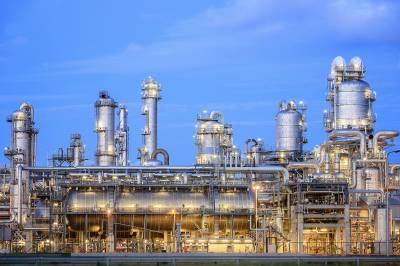
Good alignment of machine shafts results in lower power usage, longer coupling, bearing and seal life and ultimately less maintenance.
Machines that change temperature between offline and running condition pose a challenge as the shafts need to be purposefully misaligned to end up at the correct position in running condition.
Hot alignments and thermal growth calculations used to be the only tools available to overcome this hurdle. Today hot alignments are still prescribed by a large number of OEMs and equipment packagers. In practice, hot alignments have been proven to produce inaccurate results due to the large initial movement just moments after machine shut down. Hot alignment practices will not capture this initial movement due to the setup time required for the alignment measurement.
Recently SVT was asked by a client to correct the alignment for a number of critical machines. By accurate measurement on one package type it was found that within 5 minutes after shut down the machines had already moved by 1 times the accepted alignment tolerance.
In the time taken to isolate the machine (which is typically around 30 minutes across most sites – shutting down, removing guards, locking on) that dynamic movement and cooling had caused the alignment tolerances to be exceeded six fold.

The data illustrates why hot alignment is a flawed practice that results in shaft alignments being outside standard tolerances and hence premature failures in couplings, bearings and seals occur.
Thermal growth causing dynamic misalignment
Dynamic misalignment occurs when machines run up and reach operating temperature, changing the relative offset and angle at which shaft centrelines connect at the coupling. Original Equipment Manufacturers (OEMs) attempt to provide guidance to help align the machines they sell, but this is not adequate once they have been packaged onto a skid.
OEMs only specify the thermal growth for their machines, but this information isn’t combined with the other machines that they’re coupled to or the thermal growth of the skid they’re mounted on. The measured growth on their machines may well be accurate, but this is in isolation and doesn’t give the whole picture.
Often the driven compressor or pump is working with process that is very hot or very cold, which affects the way it, the pipework and the skid around it grows.
As a trial thermal measurements were taken around the machines and skid to attempt to calculate the thermal growth using known linear growth formulas. The results were still not satisfactory: the alignment would have still been 3-4 times outside of the tolerance.
This shows that thermal growth and dynamic machine movement is a complex problem that can’t be overcome by using the old methods.
To align properly you need to measure the relative casing movement from an offline situation to running situation (or the reverse) to determine the actual thermal and dynamic offsets. The results of both of these scenarios should show the same relative movement of the machines.
Knowing the relative movement allows alignment compensation to obtain a good alignment in running condition.
SVT can measure dynamic offsets if applicable, align your machines, review your practices and train your on-site staff to improve alignment on your site.
Contact This email address is being protected from spambots. You need JavaScript enabled to view it. to find out more.
Gerard Brookhuis is a senior consultant in the rotating equipment reliability team at SVT Engineering Consultants with 15 years' experience.



